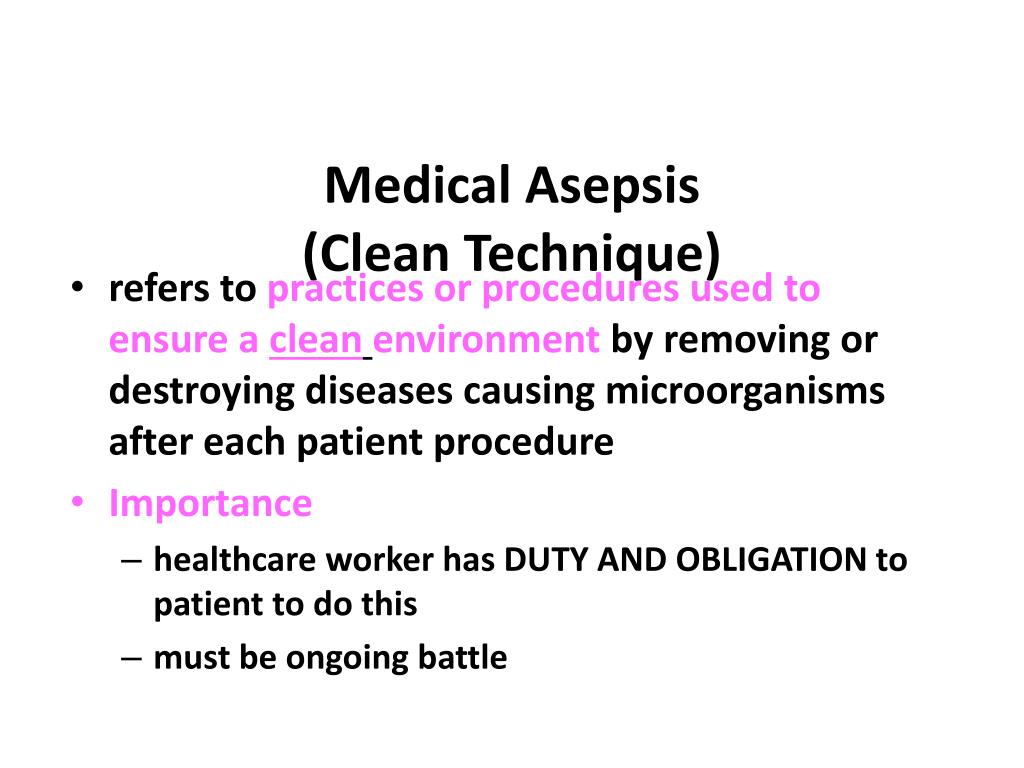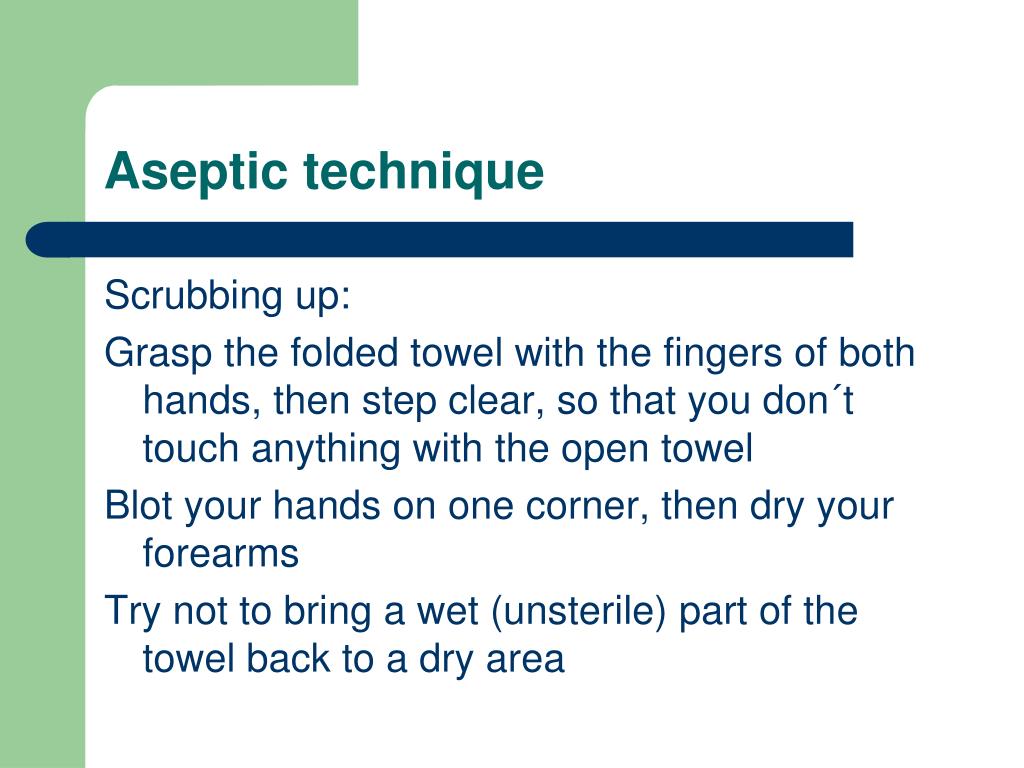
This is why surgeons, for example, always wash their hands and forearms thoroughly before operating on a patient. One of the easiest ways to prevent the spread of pathogens is to practice good hand hygiene. You also have to take appropriate protective measures to avoid spreading germs from your person. However, disinfecting objects alone isn’t enough to prevent contamination.
#Asepsis technique free
Keeping your environment free of germs starts with disinfecting all surfaces, tools, and key parts. For example, performing open-heart surgery requires a much higher level of asepsis than giving a vaccination. Depending on how high the risk of contamination is, you may have to take extra precautions to protect yourself, others, or sensitive samples. The first step in following aseptic procedure is to assess the environment and situation. Here are a few of the core components to keep in mind. Even so, some standard procedures apply to all aseptic environments. The exact aseptic technique steps you need to follow will vary based on the setting you’re working in.


No matter where they’re used, aseptic techniques also protect the professionals working with dangerous pathogens from getting sick. Without them, pathogens in the air, on surfaces, and even on the healthcare providers themselves can transfer to patients and make them ill. In healthcare, aseptic practices are the most effective way to prevent infections. Any unwanted biological interference can corrupt the culture and make it useless. Gathering accurate data from plated cells and microorganisms requires a pure culture. In a laboratory, aseptic techniques keep samples from getting contaminated. Using aseptic technique in a microbiology lab may look different than using it in healthcare, but it’s vital in both settings. These may include bacterial cultures and patients undergoing operations. It does involve the use of sterilized tools, but it also extends to things that can’t be completely sterilized. Filtration, chemical treatments, and radiation can also be effective.įoods, surgical instruments, medications, and lab equipment are all examples of items treated with sterile techniques.Īseptic technique focuses on avoiding and minimizing the risk of contamination. The most common sterilizing methods include steam, high heat, and high pressure. Sterilization is the act of decontaminating an item by killing all the present microorganisms. There is some overlap between aseptic and sterile techniques, but the terms aren’t quite synonymous. Aseptic techniques are the standards and procedures that help to maintain a germ-free environment. In contrast, aseptic refers to something free of bio-contaminants. It also applies to sepsis, a medical condition in which an infection spreads throughout your whole body.
#Asepsis technique full
You may have heard that term in regards to a septic tank, a holding tank full of contaminated wastewater. When something is septic, it’s contaminated with harmful biological substances like bacteria. To understand what aseptic technique is, let’s start by breaking down the terminology. What measures are involved in aseptic technique and why are they so important to follow? We’ll answer these questions and more below.

The procedures they use, called aseptic techniques, go beyond the typical steps of good hygiene and cleanliness.

As such, people working in many clinical, laboratory, and industrial settings must take extra care to avoid it. This means that the threat of biological contamination is always present. Not only do they cover almost every surface, but they also travel from place to place through the air. Bacteria, viruses, fungi, and other microscopic organisms are everywhere.


 0 kommentar(er)
0 kommentar(er)
